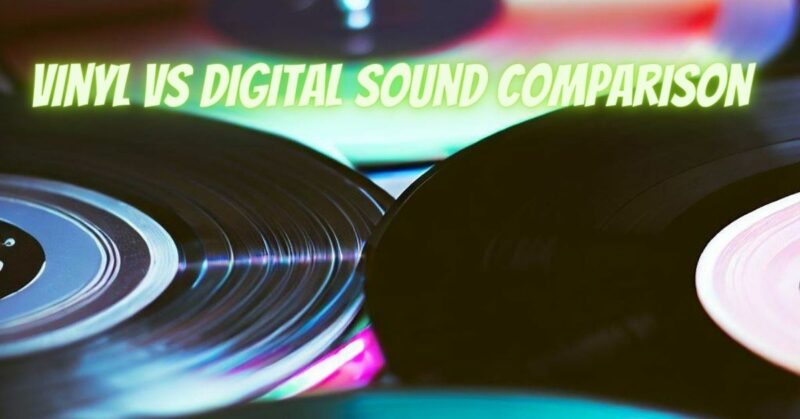In the world of music consumption, the battle of analog vs. digital has raged for decades. Central to this debate is the comparison between the sound of vinyl records and digital formats. Each possesses distinct qualities that cater to different preferences and philosophies of sonic enjoyment. Let’s explore the characteristics of both vinyl and digital formats, examining their strengths and nuances in the quest for sonic perfection.
Vinyl: Nostalgia and Warmth
Analog Charm:
Vinyl records carry a nostalgic aura, harkening back to the golden era of music consumption. Their warm, analog sound is often attributed to the unique way they capture soundwaves.
Tonal Complexity:
Vinyl’s analog nature allows it to capture a wider range of frequencies and harmonics, resulting in a more complex and textured sound. Audiophiles often appreciate the richness and depth of vinyl’s sonic palette.
Vinyl’s Characteristic Imperfections:
Some listeners are drawn to the inherent imperfections of vinyl records, including the subtle crackling and pops that can arise from the interaction between the stylus and the grooves. These imperfections add a layer of authenticity and uniqueness to the listening experience.
Digital: Precision and Convenience
Fidelity and Accuracy:
Digital formats, such as CDs and high-resolution audio files, offer pristine sound reproduction. The absence of analog noise and distortion allows for accurate representation of the original recording.
Dynamic Range:
Digital formats often boast a wider dynamic range, allowing for greater contrast between quiet and loud passages. This results in enhanced clarity and detail in the music.
Consistency and Convenience:
Digital formats provide consistency in sound quality across multiple plays, as they are less susceptible to wear and damage. Moreover, the convenience of digital music allows for easy access to vast libraries with a simple click.
Comparing the Two: Factors to Consider
- Sound Quality: Vinyl’s warmth and tonal richness appeal to those seeking a more organic and immersive listening experience. Digital formats offer pristine clarity and accurate sound reproduction, catering to audiophiles who prioritize fidelity.
- Listening Environment: The choice between vinyl and digital can depend on your listening environment. Vinyl’s analog charm might be better suited for relaxed, contemplative listening sessions, while digital formats are convenient for on-the-go and background listening.
- Nostalgia vs. Innovation: Vinyl enthusiasts often gravitate towards the nostalgic experience of playing records, while digital formats embrace the innovations of the digital age.
- Equipment Quality: The quality of playback equipment, including turntables, speakers, and digital-to-analog converters, significantly impacts the sonic experience for both vinyl and digital formats.
Personal Preference and Artistic Intent
Ultimately, the decision between vinyl and digital formats rests on personal preference, lifestyle, and the emotional connection to music. Each format offers a unique way to engage with music, allowing listeners to explore diverse sonic landscapes.
While the vinyl vs. digital debate remains ongoing, it’s important to remember that the heart of music appreciation lies in the joy of listening. Whether you find solace in the crackle of vinyl or the precision of digital sound, both formats contribute to the rich tapestry of musical enjoyment, ensuring that the artistry and emotion of the music remain at the forefront of the experience.

